Varicose Vein Screening and Treatment
Varicose Vein Definitions, Assessment and Treatment
Researchers estimate that more than 30 million people in the United States suffer from some type of vascular disorder that often includes varicose veins or chronic venous insufficiency. Nearly two million seek medical assistance for a venous problem every year. By getting a medical diagnosis and treatment, patients prevent the disease processes and damage from progressing. Vein screenings involve a simple ultrasound procedure.
Venous Problems Explained
By taking the assessment, individuals may better gauge the need to seek medical help for possible venous disorders. Varicose veins are typically large, raised and appear blue, flesh-colored or red. They might also resemble twisted cords. Spider veins are thinner and more fragile-looking than varicose veins. These veins are not raised above the skin and may appear blue or red in color. Chronic venous insufficiency, or CVI, refers to the condition in which the venous valves no longer function. When this occurs, blood that is normally pushed toward the heart and lungs for oxygenation falls backward and begins pooling in the legs. The excessive amount of blood in the veins also causes expansion and unsightly protrusion. If allowed to progress, patients may develop skin discoloration and open wounds that do not heal without treatment.
Self-assessment
Individuals have a greater likelihood of suffering from a vascular disease if family members have ever been diagnosed with some type of varicose veins, venous insufficiency or venous reflux. Standing or heavy lifting for long lengths of time while at work are other risk factors. A general lack of exercise, excessive body weight and pregnancy are all also associated with venous problems. If experiencing any of these signs or symptoms, individuals should consider undergoing vein screenings.
- Aching or cramping leg pain
- Burning or itching of the skin on the lower legs
- Ankle or leg swelling
- A heavy feeling in the legs
- Visible varicose veins
- Skin discoloration on the lower legs or a change in skin texture
- Open wounds on the lower legs that will not heal
- Restless leg syndrome
Venous Variscosity Treatments
Depending on the severity of the condition, physicians may recommend elevating legs or wearing compression stockings. Varicose vein treatment may include a procedure known as sclerotherapy, which involves injecting a solution into the veins that shrinks the tissue. Endovenous laser treatments and radiofrequency ablations are other options that entail heating the inside of the vein to seal the vessel, which eventually disappears. If there are bulging varicose veins present, the physician may choose to remove the veins through tiny incisions. This procedure is known as ambulatory phlebectomy.
If you are experiencing one or multiple symptoms associated with venous disorders, feel free to give us a call and schedule an appointment for a consultation or a free ultrasound screening. IVC®, your Utah varicose vein treatment specialists, perform free varicose vein screenings daily, and occasionally in the evening or weekend. Request a free varicose vein screening.


